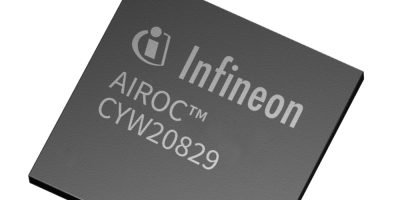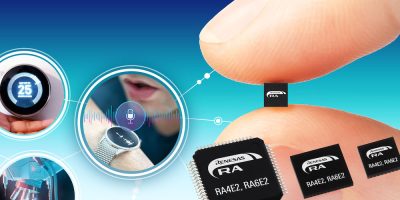Adding to its range of power ICs, Nexperia has introduced the NEH2000BY power management IC (PMIC) for low power embedded applications, including the IoT.
The NEH2000BY PMIC recharges a battery or storage capacitor using energy harvested from ambient sources, such as light (which can be harvested using a photovoltaic cell). The PMIC will enable the development of electronic devices that are self-powered, smaller, and environmentally friendly, said Nexperia and exploit energy harvesting to help mitigate the environmental impact of the billions of batteries produced and discarded each year.
The PMIC makes it much easier to design energy harvesting solutions which can be up to 20x smaller than other competing offerings and do not require manual optimization for individual applications, claimed the company. It is designed without inductors, which simplifies PCB design and “significantly” reduces BoM and board size. The assembly area is just 12mm².
To achieve the highest conversion efficiency, energy harvesting must be able to adapt as the ambient energy source fluctuates. To this end, the NEH2000BY performs maximum power point tracking (MPPT), an adaptive algorithm to optimise how it transfers harvested energy, achieving optimum average conversion efficiency by up to 80 per cent. The MPPT algorithm combines speed with accuracy, allows the PMIC to adapt to environmental changes in less than one second: significantly faster than any other currently available solution, said Nexperia. By maximising the amount of energy harvested over the course of a day, the PMIC can broaden the number of applicable use cases, while the self-optimisation functionality and the ability to operate autonomously without pre-programming make it simpler to design products using ambient energy.
Nexperia’s energy harvesting technology enables economical energy harvesting from various ambient sources in applications consuming up to several mW of power, including wireless IoT nodes, wearable smart tags and electronic shelf labels.
Dan Jensen, general manager business group analogue and logic ICs at Nexperia commented: “The NEH2000BY . . . will allow the adoption of energy harvesting in a larger range of use cases. By eliminating the requirement to change batteries in these applications, NEH2000BY will significantly reduce the amount of hazardous waste produced, with enormous environmental benefits.”
The NEH2000BY is available in a 16-lead, 3.0 x 3.0mm QFN package and operates between -40 and +85 degrees C.







